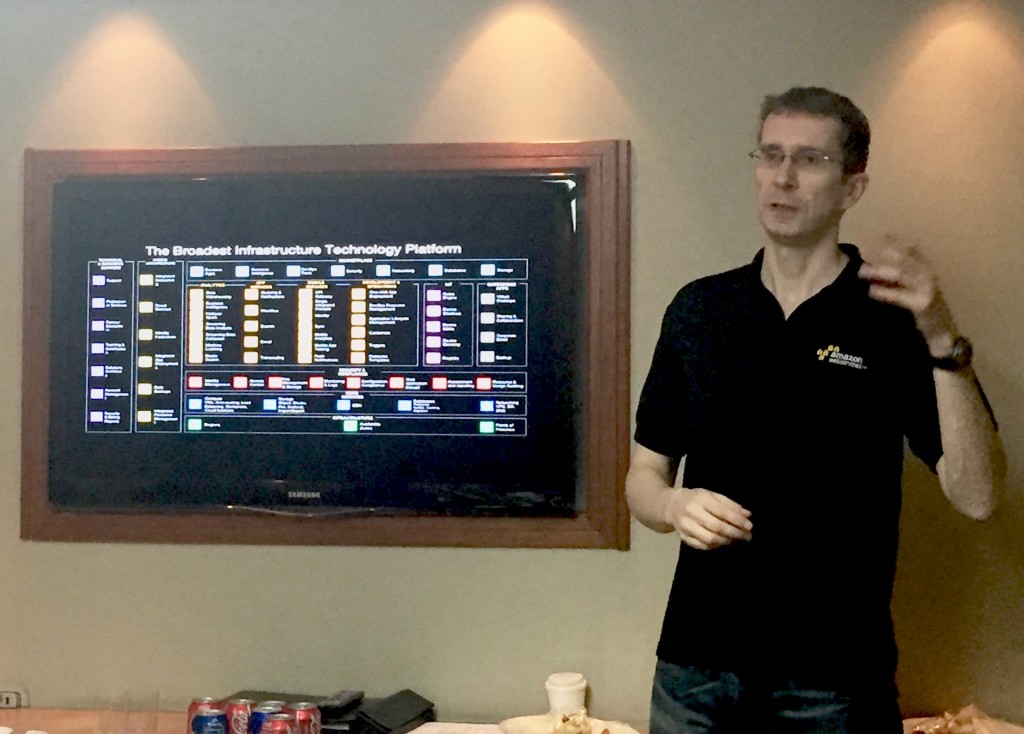The dawn of Internet of Things (IoT), disaster recovery and hybrid cloud are just few of the highlights at Amazon Web Services (AWS) media Masterclass held recently.
Cloud computing is inevitable and in a few year’s time, everything will operate on the cloud platform if it isn’t already. AWS has already set the stage for this and has become the preferred and go-to companies by large enterprises and small and medium businesses.
AWS is a collection of cloud computing services that make up the on-demand computing platform offered by Amazon.com. At present, the firm has more than 50 different services that include cloud infrastructure services and platform services that offer productivity and operational efficiency.
“We are a customer-obsessed company and this is why we are able to serve great number and variety of customers,” said Markku Lepisto, principal technology evangelist APAC for AWS.
AWS was launched in 2006 and now counts as customers data-driven companies like Airbnb, Netflix, Pinterest and Spotify.
Apart from the reputation of reliability that AWS built, the company is also known for its affordable cost. It has reduced prices 51 times and charges per hour instead of a package, which means a small startup can very well begin operating on cloud even on a limited budget.
Disaster recovery
Aside from security, businesses are also looking into the disaster recovery programs of companies that offer cloud computing services. Downtime that lasts for hours could cost companies significantly.
The AWS cloud supports many popular disaster recovery (DR) architectures from “pilot light” environments that are ready to scale up at a moment’s notice to “hot standby” environments that enable rapid failover. With data centers around the world, AWS provides a set of cloud-based disaster recovery services that enable rapid recovery of your IT infrastructure and data.
Lepisto did a demo on how fast is AWS in data recovery. In just a few minutes, the Tokyo data center was able to take over the website when the Singapore data center “suddenly stopped working.” The downtime is less than five minutes.
“The way AWS charges allows a lot of flexibility,” Lepisto said. Businesses will pay only for the number of hours they use any AWS service.
Services
Lepisto explained customers could choose to deploy and run applications in multiple physical locations within the AWS Cloud. As of last count at the first quarter of this year, there are 12 AWS geographic infrastructure regions or AWS Regions consisting of 32 Availability Zones in the same region.
AWS offers a set of global compute, storage, database, analytics, application, and deployment services that help organizations move faster, lower IT costs and scale applications. These services can power a wide variety of workloads including: web and mobile applications, IoT, game development, data processing and warehousing, storage, archive and more.
In the realm of IoT, Lepisto showed how AWS perform even the most basic household task using a smartphone. The capabilities of and reliability of AWS are important when the world fully embraces IoT. Data storage and analytics are just two of the most important aspects in IoT.
Customers
In the Philippines, Globe Telecom is just one of the many companies that uses AWS. According to Lepisto, the telco is “able to accelerate innovation by testing new ideas in less than 20 minutes and has reduced its total cost of ownership by 40-60 percent using AWS.”
Since 2011, Globe has been using AWS in its web properties and customer experience platform in Gen3 stores. Globe’s business analytics on customer’s usage experience is also hosted on the AWS platform.
Amazon has more than a million active customers across all business sizes in 190 countries including nearly 2,000 government agencies, 5,000 education institutions and more than 17,500 nonprofit organizations. RC
